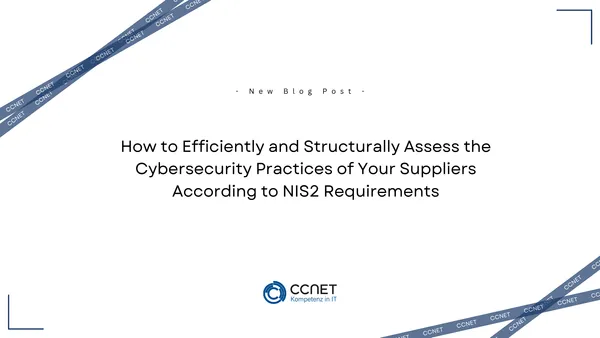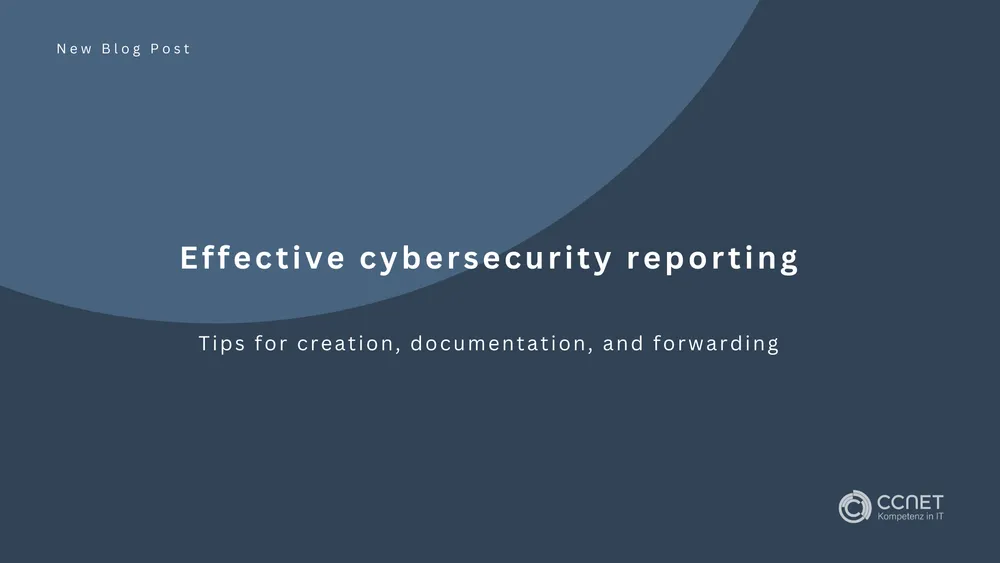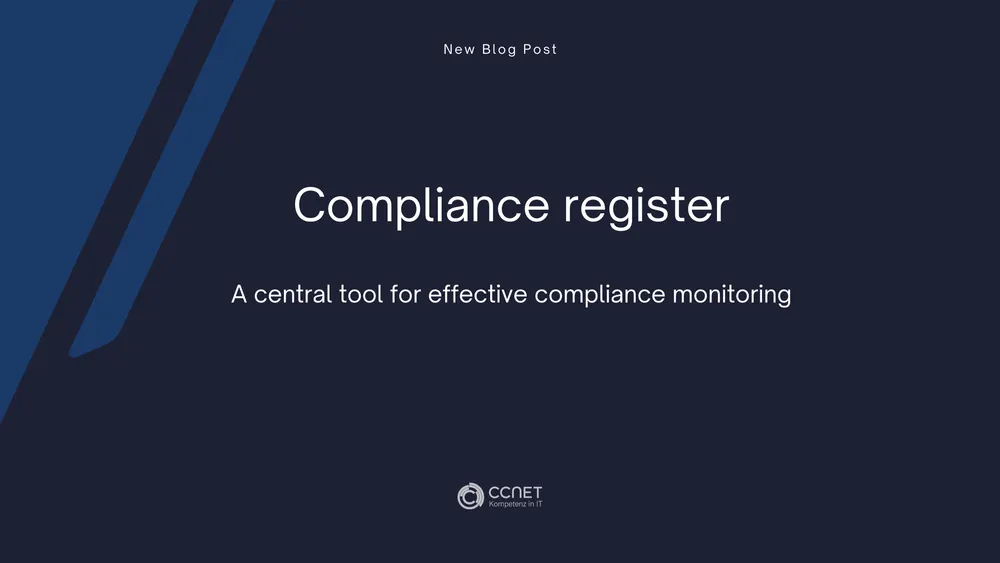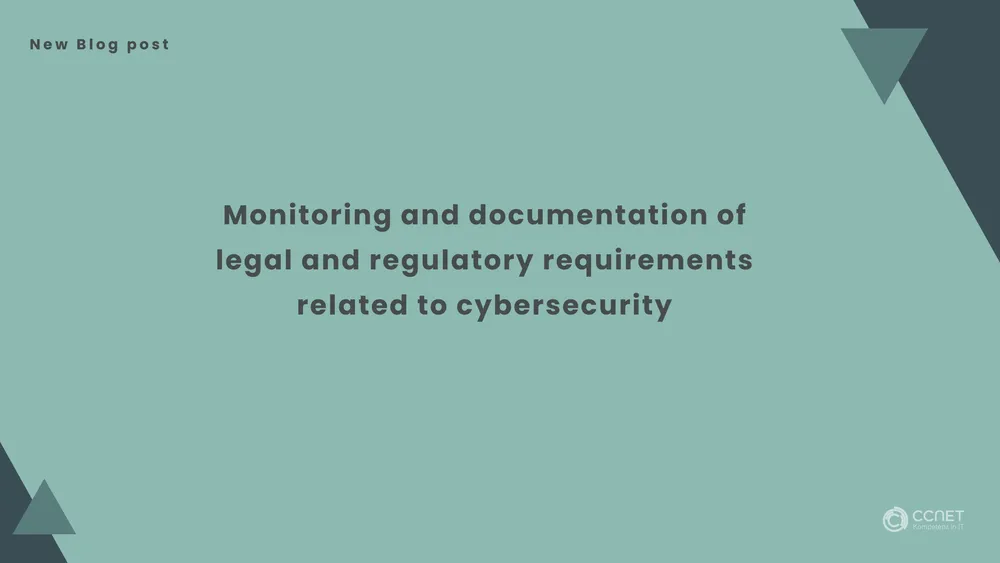
CCNet
Dec 25, 2024 • 3 min read

How to Efficiently and Structurally Assess the Cybersecurity Practices of Your Suppliers According to NIS2 Requirements
Supply chain security is becoming increasingly important as companies rely more and more on external partners. With the NIS2 Directive, the pressure is rising not only to ensure one's own cybersecurity but also to guarantee that all suppliers adhere to the same high standards. A targeted evaluation process helps identify weaknesses early and effectively minimize risks. A well-thought-out questionnaire allows you to assess and evaluate your suppliers' cybersecurity practices based on a solid foundation.
Further information can be found here: IT-Consultation
The Key to Understanding Your Suppliers’ Cybersecurity Practices
The questionnaire is designed to provide a detailed assessment of your suppliers' cybersecurity practices. It covers various areas, from general security strategies to specific incident handling measures. By systematically analyzing these areas, risks can be identified, and steps can be taken to ensure that NIS2 Directive cybersecurity requirements are met throughout the supply chain.
The Evaluation Process: Core Questions for Supplier Cybersecurity
-
General Cybersecurity Practices
-
Does your company have a formal cybersecurity strategy?
Why is this important? A formal strategy shows that cybersecurity is an integral part of the company and that risks are addressed in a structured manner.Is there a designated IT Security Officer?
Why is this important? A designated person ensures that cybersecurity measures are coordinated and continuously monitored. -
How often do you conduct internal cybersecurity audits?
Why is this important? Regular audits show that security gaps are continuously identified and steps are taken to improve them. -
What cybersecurity certifications does your company hold?
Why is this important? Certifications such as ISO/IEC 27001 demonstrate that security standards are at a high level and meet internationally recognized guidelines. -
How do you train your employees on cybersecurity?
Why is this important? Regular training is crucial to ensure that staff are always up to date on cybersecurity threats and practices.
-
-
IT Infrastructure and Data Security
-- What safeguards have you implemented to secure your IT infrastructure against cyberattacks?
Why is this important? This question evaluates the robustness of the IT infrastructure against potential threats.-
Do you use encryption technologies to protect sensitive data?
Why is this important? The use of encryption shows that the protection of sensitive data is a top priority for the company. -
How is access to sensitive data and systems managed?
Why is this important? Effective access management is crucial to preventing unauthorized access to critical systems and data. -
Are there procedures in place for detecting and responding to cyberattacks?
Why is this important? A clear detection and response protocol is necessary to quickly and efficiently react to threats in case of an emergency.
-
-
Dealing with Sub-suppliers
-
How do you ensure that your sub-suppliers meet the same security standards?
Why is this important? Risks in the supply chain must be actively monitored and managed to avoid vulnerabilities. -
Are there contractual agreements that include cybersecurity requirements?
Why is this important? Contract-based security requirements are an indicator that the company proactively secures its supply chain. -
How often do you conduct security reviews of your sub-suppliers?
Why is this important? Regular audits of sub-suppliers help ensure that their security standards are also maintained at a high level.
-
-
Incident and Emergency Management
-
Does your company have a documented emergency plan for cybersecurity incidents?
Why is this important? An emergency plan ensures that clear steps are taken to minimize damage and restore operations in the event of an incident. -
How quickly can you respond to and report a security incident?
Why is this important? Response speed is critical to keeping potential damage as low as possible. -
What steps do you take to restore systems and data after an incident?
Why is this important? A clear recovery strategy shows how well the company is prepared to quickly resume normal operations after an incident.
-
-
Compliance and Legal Requirements
-
Does your company comply with applicable cybersecurity regulations?
Why is this important? Compliance with legal requirements is a fundamental aspect of security and trust in cooperation. -
How do you ensure compliance with the General Data Protection Regulation (GDPR)?
Why is this important? GDPR compliance is particularly important when handling personal data. -
How do you document and report security incidents to authorities and affected parties?
Why is this important? A transparent and clear process for reporting incidents is crucial to meeting legal requirements and maintaining trust with partners.
-
-
Continuous Improvement
-
What processes have you implemented to continuously improve your security measures?
Why is this important? Proactive security measures and continuous improvements show that the company is actively working to strengthen its security strategy. -
How often are your security policies reviewed and updated?
Why is this important? Regular updates to security policies ensure they are always adapted to current threats.
-
-
Reporting and Communication
-
How often do you produce reports on the status of your cybersecurity measures?
Why is this important? Transparent reporting demonstrates responsibility and strengthens trust between suppliers and customers. -
How do you communicate with your customers about potential security incidents?
Why is this important? Open communication about incidents creates transparency and trust, which is crucial for long-term cooperation.
-
Conclusion: A Structured Risk Management Approach to Securing Your Supply Chain
The NIS2 Directive requires companies to systematically assess the cybersecurity practices of their suppliers according to its guidelines. A structurally detailed questionnaire helps identify risks and ensures that your suppliers meet the required security standards. This not only strengthens the security of your supply chain but also enhances the resilience of your company.


